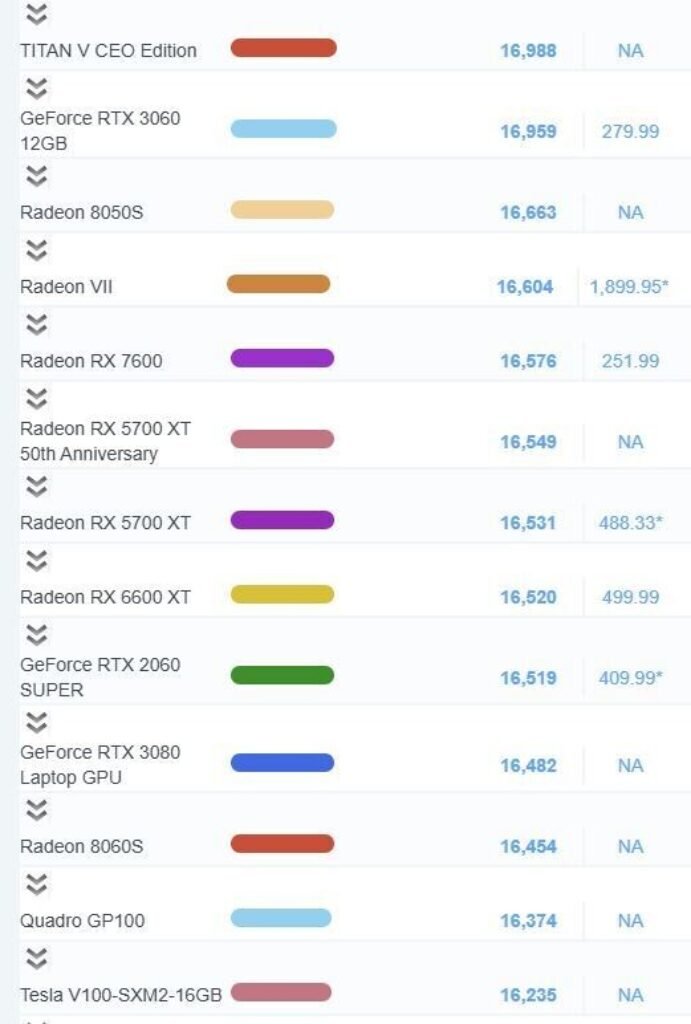AMD is preparing to revolutionize the laptop and tablet market with its upcoming Strix Halo APUs. These processors, distinct from the Strix Point lineup, will feature a pure Zen 5 architecture, eliminating the efficiency-focused Zen 5c cores. This shift is expected to provide significant improvements in multicore processing power, catering to high-performance workloads. The absence of small cores in Strix Halo APUs is aimed at delivering a no-compromise performance profile that targets enthusiasts and professionals.
In addition to CPU enhancements, Strix Halo APUs are set to redefine expectations in integrated graphics performance. Unlike traditional APUs that rely on basic graphics capabilities, Strix Halo will include RDNA 3.5-based integrated GPUs (iGPUs) with an unprecedented number of compute units (CUs). This innovation is expected to challenge entry-level and even mid-range discrete GPUs, potentially reducing the need for dedicated graphics cards in certain use cases.
Performance Expectations
Recent leaks suggest that the flagship APU in the Strix Halo lineup, reportedly named Ryzen Max+ Pro 395, will include an integrated GPU branded as the Radeon 8060S. This iGPU features 40 compute units, leveraging AMD’s RDNA 3.5 architecture. Benchmark results have started to surface, showcasing the potential of this integrated solution.
In a Geekbench Vulkan benchmark, the Radeon 8060S outperformed NVIDIA’s RTX 4060 Laptop GPU, a discrete solution often found in mid-range gaming laptops. This is a significant achievement for an iGPU, signaling AMD’s capability to bridge the gap between integrated and discrete graphics performance. However, other benchmarks, such as PassMark, paint a slightly different picture. According to leaked PassMark scores, the Radeon 8060S achieved 16,454 points, while the 32-CU Radeon 8050S scored a slightly higher 16,663 points. This surprising result suggests that the benchmark data may not yet reflect the final performance of retail units, especially considering the small performance delta between the two models despite a substantial difference in CU count.

When compared to discrete GPUs, these performance numbers place the Radeon 8060S in a similar performance bracket to NVIDIA’s RTX 3080 Laptop GPU. While this falls short of the newer RTX 4070 Laptop GPU, it remains an impressive feat for an integrated graphics solution. Moreover, as AMD finalizes driver optimizations and firmware updates, the actual performance of retail Strix Halo APUs is likely to surpass these preliminary results.
A Game-Changer for Mobile Devices
The Strix Halo lineup’s capabilities could transform the design of portable devices, particularly laptops and tablets. One notable example is the upcoming ROG Flow Z13 tablet, which is rumored to feature a Strix Halo APU. With the inclusion of high-performance Zen 5 cores and a powerful RDNA 3.5 iGPU, devices like the Flow Z13 may offer desktop-class computing and gaming experiences without the need for discrete graphics hardware. This approach not only reduces the overall cost and complexity of the system but also improves battery efficiency and thermal performance.
What This Means for the Market
AMD’s Strix Halo APUs signal a shift in the balance between integrated and discrete graphics solutions. By offering integrated GPUs that rival mid-range discrete options, AMD could disrupt traditional laptop configurations. This is especially relevant for lightweight gaming laptops, ultra-portables, and creative workstations, where space, weight, and power consumption are critical considerations.
Furthermore, the enhanced multicore performance of Zen 5 and the graphics capabilities of RDNA 3.5 could attract a broader audience, from gamers to professionals. If AMD can deliver on its promise of performance and efficiency, the Strix Halo lineup may establish a new standard for what integrated solutions can achieve.
The Road Ahead
As the official launch of Strix Halo APUs approaches, more details about their final specifications and performance are expected to emerge. Early benchmarks, while promising, highlight the need for further refinements. AMD’s ability to address these initial inconsistencies and deliver a polished product will be crucial to its success in this highly competitive market.
With Strix Halo, AMD is poised to challenge the traditional boundaries of integrated graphics, offering a compelling alternative to discrete GPUs in portable systems. Whether this vision materializes fully will depend on the final execution, but the potential is undeniable.
Source: Passmark







